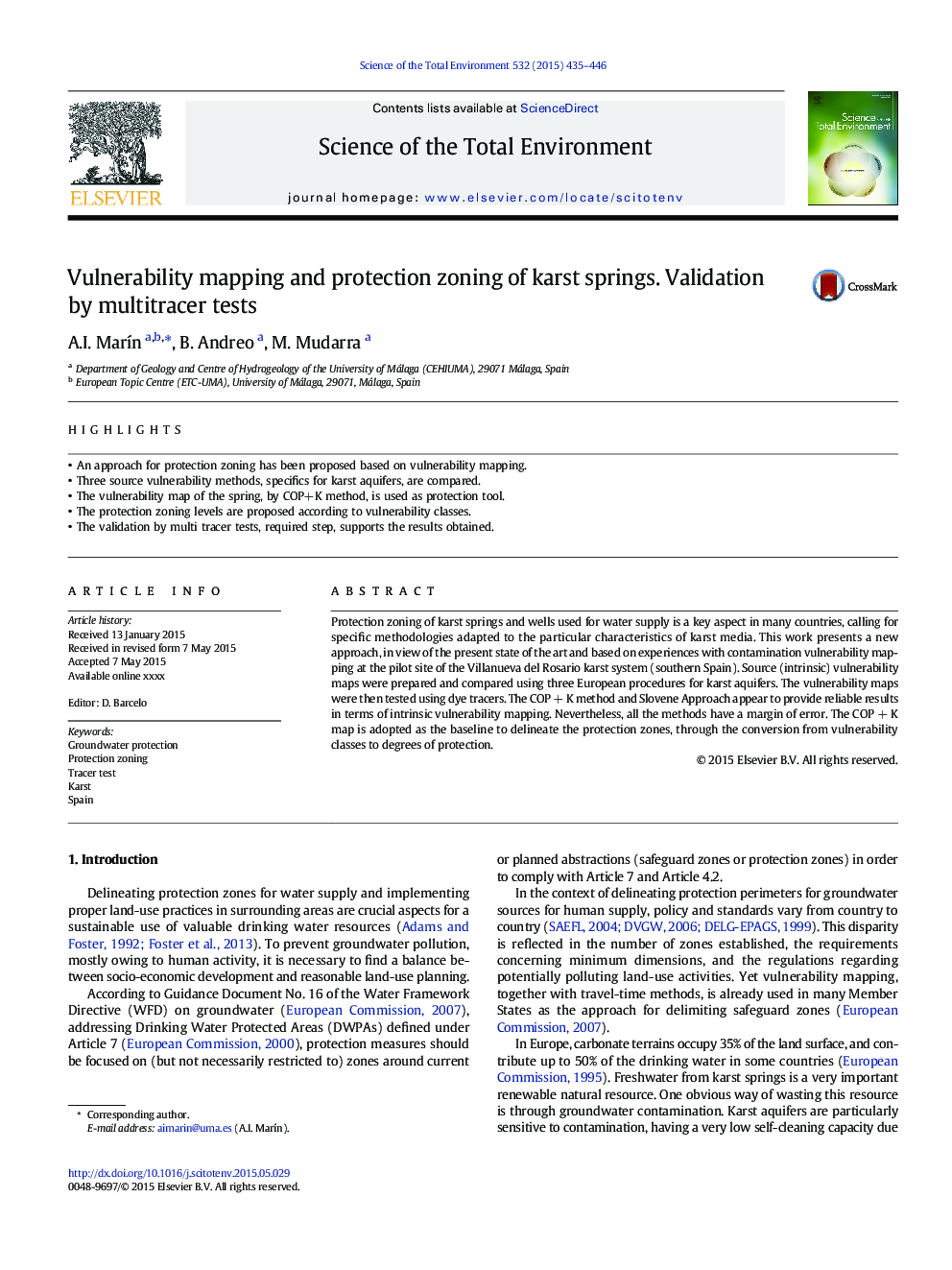| Article ID | Journal | Published Year | Pages | File Type |
|---|---|---|---|---|
| 6325755 | Science of The Total Environment | 2015 | 12 Pages |
Abstract
Protection zoning of karst springs and wells used for water supply is a key aspect in many countries, calling for specific methodologies adapted to the particular characteristics of karst media. This work presents a new approach, in view of the present state of the art and based on experiences with contamination vulnerability mapping at the pilot site of the Villanueva del Rosario karst system (southern Spain). Source (intrinsic) vulnerability maps were prepared and compared using three European procedures for karst aquifers. The vulnerability maps were then tested using dye tracers. The COPÂ +Â K method and Slovene Approach appear to provide reliable results in terms of intrinsic vulnerability mapping. Nevertheless, all the methods have a margin of error. The COPÂ +Â K map is adopted as the baseline to delineate the protection zones, through the conversion from vulnerability classes to degrees of protection.
Related Topics
Life Sciences
Environmental Science
Environmental Chemistry
Authors
A.I. MarÃn, B. Andreo, M. Mudarra,
